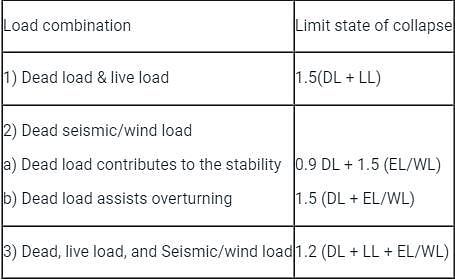Civil Engineering (CE) Exam > Civil Engineering (CE) Tests > RCC & Prestressed Concrete > Test: Limit State of Collapse: Flexure - Civil Engineering (CE) MCQ
Test: Limit State of Collapse: Flexure - Civil Engineering (CE) MCQ
Test Description
10 Questions MCQ Test RCC & Prestressed Concrete - Test: Limit State of Collapse: Flexure
Test: Limit State of Collapse: Flexure for Civil Engineering (CE) 2025 is part of RCC & Prestressed Concrete preparation. The Test: Limit State of Collapse: Flexure questions and answers have been
prepared according to the Civil Engineering (CE) exam syllabus.The Test: Limit State of Collapse: Flexure MCQs are made for Civil Engineering (CE) 2025 Exam. Find important
definitions, questions, notes, meanings, examples, exercises, MCQs and online tests for Test: Limit State of Collapse: Flexure below.
Solutions of Test: Limit State of Collapse: Flexure questions in English are available as part of our RCC & Prestressed Concrete for Civil Engineering (CE) & Test: Limit State of Collapse: Flexure solutions in
Hindi for RCC & Prestressed Concrete course. Download more important topics, notes, lectures and mock
test series for Civil Engineering (CE) Exam by signing up for free. Attempt Test: Limit State of Collapse: Flexure | 10 questions in 30 minutes | Mock test for Civil Engineering (CE) preparation | Free important questions MCQ to study RCC & Prestressed Concrete for Civil Engineering (CE) Exam | Download free PDF with solutions
Test: Limit State of Collapse: Flexure - Question 1
In limit state design , the centroid of compression force from extreme compression fibre lies at distance of
Detailed Solution for Test: Limit State of Collapse: Flexure - Question 2
Test: Limit State of Collapse: Flexure - Question 3
Maximum stress in concrete by code is restricted to ______.
Detailed Solution for Test: Limit State of Collapse: Flexure - Question 3
Test: Limit State of Collapse: Flexure - Question 4
In limit state method , the limiting value of depth of neutral axis for Fe-250 grade of steel is ?
Detailed Solution for Test: Limit State of Collapse: Flexure - Question 5
Test: Limit State of Collapse: Flexure - Question 6
Limit state method of structural designing is practised as
Detailed Solution for Test: Limit State of Collapse: Flexure - Question 6
Test: Limit State of Collapse: Flexure - Question 7
The lever arm in limit state design is expressed as
Test: Limit State of Collapse: Flexure - Question 8
Which of the following format is used in limit state method?
Detailed Solution for Test: Limit State of Collapse: Flexure - Question 8
Test: Limit State of Collapse: Flexure - Question 9
For a structural member, dead load = 20 kN and live load = 12 kN. What will be its design load as per the limit state of collapse philosophy?
Detailed Solution for Test: Limit State of Collapse: Flexure - Question 9
Test: Limit State of Collapse: Flexure - Question 10
Which of the following factors is included in the limit state of strength?
Detailed Solution for Test: Limit State of Collapse: Flexure - Question 10
|
13 videos|42 docs|34 tests
|
Information about Test: Limit State of Collapse: Flexure Page
In this test you can find the Exam questions for Test: Limit State of Collapse: Flexure solved & explained in the simplest way possible.
Besides giving Questions and answers for Test: Limit State of Collapse: Flexure, EduRev gives you an ample number of Online tests for practice
























